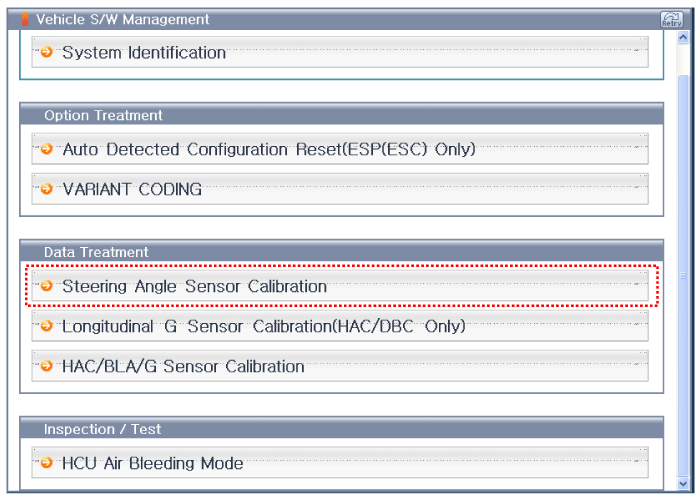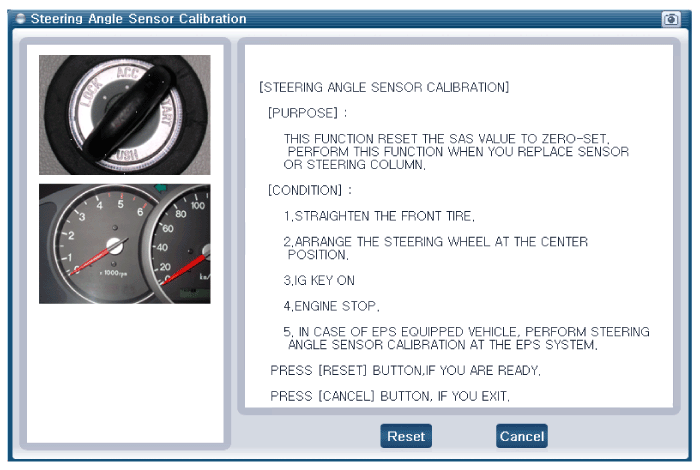Hyundai Tucson: ESC(Electronic stability system) System / Steering Angle Sensor Description and Operation
| Description |


 DBC Switch Repair procedures
DBC Switch Repair procedures
Inspection
1.
Turn ignition switch OFF and disconnect the negative (-) battery cable.
2.
Remove the crash pad side switch assembly.
(Refer to Body - "Crash Pad")
3.
Check the continuity b ...
Other information:
Hyundai Tucson (LM) 2010-2015 Owners Manual: If the engine overheats
If your temperature gauge indicates overheating, you experience a loss of power,
or hear loud pinging or knocking, the engine may be overheating.
If this happens, you should:
1.Pull off the road and stop as soon as it is safe to do so.
2.Place the shift lever in P (Park) and set the parking bra ...
Hyundai Tucson (LM) 2010-2015 Service Manual: Timing Chain Components and Components Location
Components
1. Intake camshaft2. Exhaust camshaft3. Intake CVVT assembly4. Exhaust CVVT assembly5. Timing chain6. Timing chain tensioner arm7. Timing chain tensioner8. Timing chain guide9. Timing chain cover10. Service plug bolt & gasket11. Front oil seal12. Crankshaft damper pulley
...

